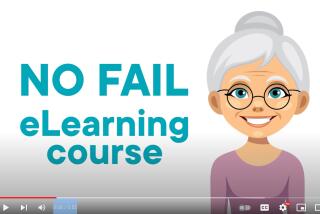State Still Hasn’t Settled on a Testing System
- Share via
Earlier this summer, state Supt. of Public Instruction Delaine Eastin emerged somewhat surprisingly as a staunch advocate of the main element of the state’s student testing system, the Stanford 9 exam.
Never a fan of the tests, Eastin nonetheless defended them amid a tidal wave of bad news about scoring screw-ups and faulty data.
To have any hope of making progress on its journey toward improving its public schools, she said repeatedly, California must stop changing its testing program every year and “stay the course.”
Now Eastin seems to have forgotten her own admonition. She is proposing not only to change direction on testing but, many in Sacramento believe, to blow up the ship.
If Eastin’s plan were adopted, it would “put us back to Square 1,” said Suzanne Tacheny, an education policy expert with California Business for Education Excellence, an influential lobbying group created last December by the state’s top companies and business leaders.
Square 1. When it comes to testing, that’s a familiar spot for California educators.
In the past five years, one state testing program died after two years amid evidence that the information it produced was often inaccurate. A second program let districts use whatever tests they wanted. That fell apart after one trial.
This year was the second in which districts were required to give the Stanford 9 in grades 2 through 11. But rather than stick to the one test, the state this year also gave a more difficult test in math and language arts based on the state’s academic standards.
More of those “standards” tests, in science and social studies, are on the drawing board. So are a high school exit exam and a test that would produce only school scores. And, if all of that weren’t enough, the state is spending money to improve a set of end-of-course exams in 18 subjects.
If all of those pieces were in place, that system would be “redundant and burdensome,” the business group Tacheny represents believes. Others, including Eastin, have come to the same conclusion.
*
So top-level discussions are underway to jettison some of the proposed tests. According to one proposal that’s getting high marks, the state would rely on the Stanford 9 test and build on the standards-based test it gave this year.
Instead of having a separate high school exit exam, experts would simply figure out which items on those two tests students had to answer correctly in order to have met the requirements for a high school diploma.
But though others are committed to building a system based on the Stanford 9, Eastin wants to toss it overboard in grades 4 through 8, replacing it with a shorter version that provides far less information to teachers or parents. She would get rid of it altogether in grades 10 and 11.
Eastin favors an experimental test that operates sort of like an opinion poll to create an overall picture. Students take different versions and, when their results are put together, it’s supposed to produce a gauge of student achievement.
The technical problems with that type of test are myriad and, under some scenarios, could make it impossible to get reliable data for 40% of schools.
But the business group sees other problems with that approach. Burton McChesney, the group’s executive director, said it doesn’t make good management sense. If schools are to be held accountable for their performance, they need to be given the tools to get better. One tool that’s critical is good, detailed, reliable information about individual students.
Eastin was to present her plan Tuesday night at a dinner convened by the business group in the boardroom of the California Manufacturers Assn. in Sacramento . Expected guests included not only Gary K. Hart, state secretary of education, but also top legislators and business leaders and the heads of organizations representing administrators, teachers and school board members.
Then the business group plans to respond formally to her proposal. But even in advance of Tuesday’s meeting, the business group made it clear which way it was leaning.
“A testing system that does not provide direct feedback to those who most influence student performance--students, teachers and parents--simply does not make sense,” according to a set of principles the group adopted.
More to Read
Sign up for Essential California
The most important California stories and recommendations in your inbox every morning.
You may occasionally receive promotional content from the Los Angeles Times.










